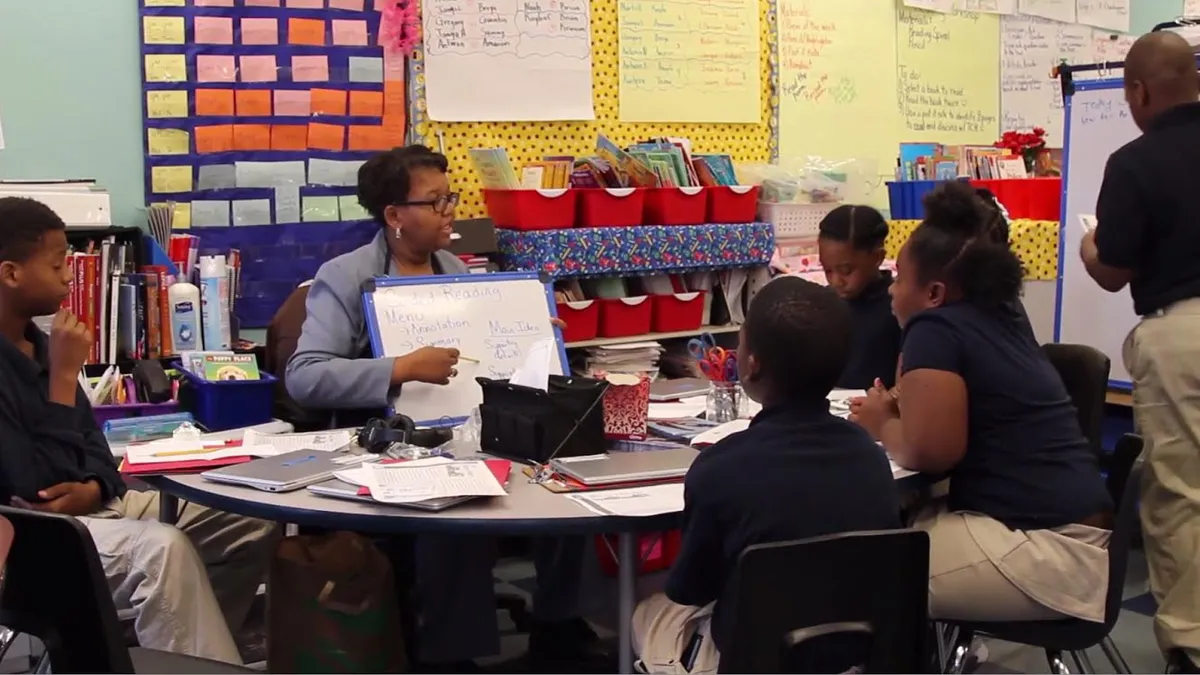Wendell Smith Elementary School on Chicago’s South Side is a turnaround school. Principal Tiffany Brown is in her fifth year at the helm, and she finds herself constantly seeking out ways to create exciting learning experiences for students.
For the past two years, she has relied on ed tech pilot programs to identify new technologies that create these experiences. A cohort of teachers at Wendell Smith Elementary tried out MyOn during the 2015-16 school year, and this year another group is testing ST Math. Brown says both products have helped increase student attendance and excitement about academics. End-of-year data last year indicated MyOn helped students make greater progress in reading than they might have otherwise, and already Brown said she is seeing similar results for math.
Brown liked the Pilot Network through LEAP Innovations so much she joined a personalized learning cohort through Chicago Public Schools, also run by LEAP Innovations, to give her students and teachers more exposure to new tools and strategies. This group is currently working through preliminary professional development before they choose an ed tech product.
LEAP's original pilot network, too, started teachers off with professional development before introducing potential tools. Brown has found that to be an important base.
“There’s a mindset shift that has to take place before you even begin to use an ed tech product,” she said. Her teachers have not only learned about new products but about research in the field of personalized learning and why certain tools might be good for kids.
Wendell Smith teachers are now learning to figure out the different learning styles of the children in their classrooms so they can tailor instruction to their needs and preferences. Brown has noticed that teachers often say they do this, but when one walks into their classrooms, students often are all doing the same thing. That is not personalized learning.
Three years into the focus on individualized instruction, Brown says teachers are implementing it in different ways, but they’re getting it.
“We’re definitely on the way to making sure we meet every kid’s individual needs, and not at the whole group level,” Brown said.
LEAP Innovations is still analyzing data from Wendell Smith’s pilot year, but researchers found two ed tech products had a statistically significant impact on student learning during the first cohort in 2014-15. By pairing participating students in the pilot network with matches in the general CPS population, LEAP Innovations calculated an effect that could be tied back to the product.
Lexia Reading Core5, an adaptive literacy tool used by 1,038 students in grades three through five, contributed to a 1.42-point increase in NWEA Measures of Academic Progress (MAP) reading scores. That closed the achievement growth gap among low-income students by 60%, among black students by 103% and among Latino students by 169%.
ThinkCERCA, which offers an online platform to help students form critical thinking skills, helped 48 seventh and eighth grade students in one school gain an average of 6.29 points on the NWEA. That meant almost an extra year’s worth of growth and a reported impact on the achievement growth gap of 264%, 456% and 749% for low-income, black and Latino students, respectively.
Kristen Howell, LEAP Innovations pilot network director, said one key goal of the network is to share out data as widely as possible. Especially as the network accumulates more data from subsequent pilots, districts beyond Chicago Public Schools can take advantage of lessons learned about what ed tech tools are working, as well as what teaching and learning practices have an impact.
Outside of Chicago, LEAP is working with other organizations around the country also running ed tech pilots under the umbrella of the Learning Assembly. LearnLaunch in Boston, the Highlander Institute in Rhode Island, iZone in New York City, iHub through the Silicon Valley Education Foundation, and Citizen Schools and Digital Promise — both national organizations — are piloting tools and practices in different ways, all adding to the collective body of knowledge about what works.
At Wendell Smith Elementary School, Brown sees the ed tech tools, and personalized learning more generally, as a way to help kids feel successful and hopeful about their own educations.
“Before, it was that one-size-fits-all and the one size might not have met my needs, but we’ve been able to get down to what individual students’ needs are,” Brown said.
That’s where schools need to be.











